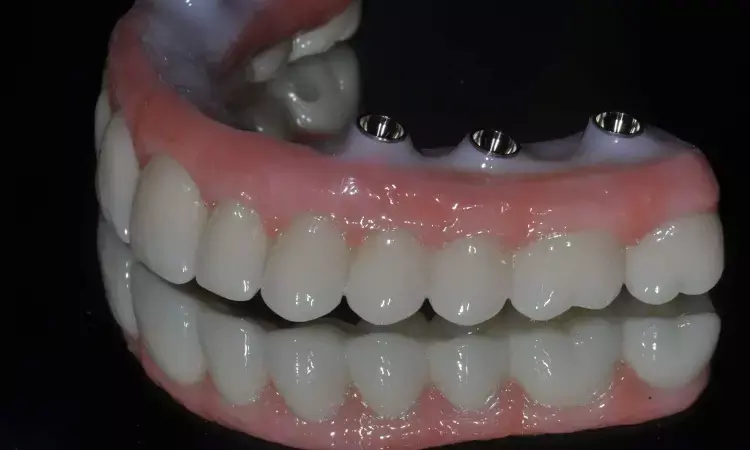- Home
- Medical news & Guidelines
- Anesthesiology
- Cardiology and CTVS
- Critical Care
- Dentistry
- Dermatology
- Diabetes and Endocrinology
- ENT
- Gastroenterology
- Medicine
- Nephrology
- Neurology
- Obstretics-Gynaecology
- Oncology
- Ophthalmology
- Orthopaedics
- Pediatrics-Neonatology
- Psychiatry
- Pulmonology
- Radiology
- Surgery
- Urology
- Laboratory Medicine
- Diet
- Nursing
- Paramedical
- Physiotherapy
- Health news
- Fact Check
- Bone Health Fact Check
- Brain Health Fact Check
- Cancer Related Fact Check
- Child Care Fact Check
- Dental and oral health fact check
- Diabetes and metabolic health fact check
- Diet and Nutrition Fact Check
- Eye and ENT Care Fact Check
- Fitness fact check
- Gut health fact check
- Heart health fact check
- Kidney health fact check
- Medical education fact check
- Men's health fact check
- Respiratory fact check
- Skin and hair care fact check
- Vaccine and Immunization fact check
- Women's health fact check
- AYUSH
- State News
- Andaman and Nicobar Islands
- Andhra Pradesh
- Arunachal Pradesh
- Assam
- Bihar
- Chandigarh
- Chattisgarh
- Dadra and Nagar Haveli
- Daman and Diu
- Delhi
- Goa
- Gujarat
- Haryana
- Himachal Pradesh
- Jammu & Kashmir
- Jharkhand
- Karnataka
- Kerala
- Ladakh
- Lakshadweep
- Madhya Pradesh
- Maharashtra
- Manipur
- Meghalaya
- Mizoram
- Nagaland
- Odisha
- Puducherry
- Punjab
- Rajasthan
- Sikkim
- Tamil Nadu
- Telangana
- Tripura
- Uttar Pradesh
- Uttrakhand
- West Bengal
- Medical Education
- Industry
Zirconium implants and titanium implants have similar clinical outcomes for upto one year following implant loading: Study

Researchers have found that zirconia and titanium implants have similar clinical outcomes after 1 year of implant loading, though mucositis and some technical complications occurred more often in zirconia implants. Recently the clinical, radiographic, and patient-reported outcomes (PROMs) of these two common implant materials were evaluated in a randomized controlled trial, showing marginal bone stability and similar patient satisfaction between the two groups. This study was published in Clinical Oral Implants Research by Anina N. and colleagues.
Dental implants are a common solution for missing teeth, and titanium is the traditional material of choice due to its excellent biocompatibility and mechanical properties. However, zirconia implants have gained popularity for their aesthetic advantages, particularly in patients with thin gingival biotypes or high smile lines. The purpose of this study was to compare clinical performance, radiographic outcomes, and patient satisfaction between zirconia and titanium implants over 1 year of loading.
There were 42 patients in this study and each had two missing adjacent teeth. In the within-subject controlled method, each patient had one random insertion of a zirconia (Zr) implant and one titanium (Ti) implant in the mesial/distal position. The implant restorations consisted of multiple layered zirconia and were veneered at the buccal surface. In the Zr group, restorations were cemented intraorally onto the one-piece Zr implant, whereas in the Ti group, the restorations were cemented extraorally onto a titanium base abutment and screwed intraorally onto the Ti implant. Clinical examinations, radiographic assessments, and PROMs were recorded at baseline (BL) and at 1 year.
Key Findings
Bleeding on Probing:
• There was an increase in bleeding on probing from BL to 1 year for both implant types, with 34 ± 30% for Zr implants and 25 ± 21% for Ti implants.
Marginal Bone Levels (MBL):
• MBL remained stable from BL to 1 year, with minimal changes observed. The mean MBL change was 0.1 ± 0.4 mm for Zr implants and −0.1 ± 0.7 mm for Ti implants, indicating good bone preservation for both materials.
Technical Complications:
• The most frequent technical complication was veneering fractures for 17.5% of the Zr implants and 5% of the Ti implants. However, this difference was not statistically significant (p = .100).
Patient-Reported Outcomes:
• Patients preferred the Zr implants because of better soft tissue color. The difference in perception of soft tissue color was statistically significant between the patients and clinicians (p < .017). However, patient satisfaction for both types of implants was high.
The results of this study indicate that both zirconia and titanium implants represent viable alternatives for dental rehabilitation due to the stability of clinical and radiographic results after 1 year of loading. While mucositis was common and veneering fractures were more frequent for zirconia implants, these complications did not affect the patients' satisfaction with or the overall success of the implants. Therefore, the aesthetic-based preference for zirconia implants underscores the importance of implant selection based on patient-reported outcomes, at least in cases when soft tissue aesthetics is an overriding concern.
Reference:
Zuercher, A. N., Balmer, M., Brügger, L. V., Thoma, D. S., Jung, R. E., & Bienz, S. P. (2024). Clinical, radiographic and patient‐reported outcomes of zirconia and titanium implants in the posterior zone after 1 year of loading—A randomized controlled trial. Clinical Oral Implants Research. https://doi.org/10.1111/clr.14329
Dr Riya Dave has completed dentistry from Gujarat University in 2022. She is a dentist and accomplished medical and scientific writer known for her commitment to bridging the gap between clinical expertise and accessible healthcare information. She has been actively involved in writing blogs related to health and wellness.
Dr Kamal Kant Kohli-MBBS, DTCD- a chest specialist with more than 30 years of practice and a flair for writing clinical articles, Dr Kamal Kant Kohli joined Medical Dialogues as a Chief Editor of Medical News. Besides writing articles, as an editor, he proofreads and verifies all the medical content published on Medical Dialogues including those coming from journals, studies,medical conferences,guidelines etc. Email: drkohli@medicaldialogues.in. Contact no. 011-43720751


